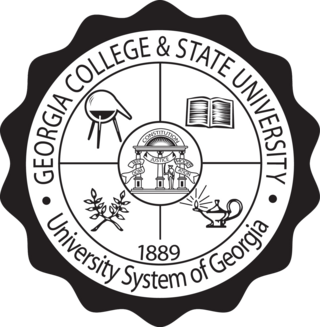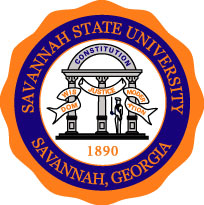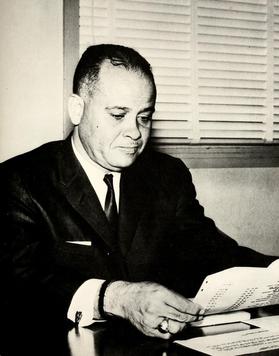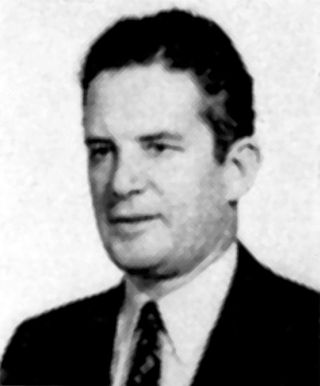Related Research Articles

Georgia College & State University is a public liberal arts university in Milledgeville, Georgia. The university enrolls approximately 7,000 students and is a member of the University System of Georgia and the Council of Public Liberal Arts Colleges. Georgia College was designated Georgia's "Public Liberal Arts University" in 1996 by the Georgia Board of Regents.

Augusta State University was a public university in Augusta, Georgia. It merged with Georgia Health Sciences University in 2012 to form Georgia Regents University, later known as Augusta University.
Georgia Southern University–Armstrong Campus, formerly Armstrong State University, is one of three campuses of Georgia Southern University, a public university in the U.S. state of Georgia. Occupying a 268-acre (1.08 km2) area on the residential southside of Savannah, Georgia, the school became one of three campuses of Georgia Southern University in 2018. The university's flagship campus is in Statesboro, 50 miles (80 km) west of Savannah. The Armstrong campus is located approximately 15 miles (24 km) from downtown Savannah and 25 miles (40 km) from Tybee Island. Armstrong offers undergraduate and graduate degrees; it has a total student enrollment of approximately 5,000 students.

Georgia Gwinnett College is a public, four-year college in Lawrenceville, Georgia. It is a member of the University System of Georgia. Georgia Gwinnett College opened on August 18, 2006. It has grown from its original 118 students in 2006 to approximately 12,000 students in 2023.

Macon State College was a four-year state college unit of the University System of Georgia. On Jan. 8, 2013, it was merged with Middle Georgia College into a new institution, Middle Georgia State College, which was renamed on July 1, 2015 to Middle Georgia State University.
The Georgia Tech Research Institute (GTRI) is the nonprofit applied research arm of the Georgia Institute of Technology in Atlanta, Georgia, United States. GTRI employs around 3,000 people, and was involved in nearly $1 billion in research in 2023 for more than 200 clients in industry and government.

Savannah State University is a public historically black university in Savannah, Georgia. It is the oldest historically black public university in the state. The university is a member-school of the Thurgood Marshall College Fund.
Earl Glenn Yarbrough Sr. was a former president of the Savannah State University from May 30, 2007, until May 8, 2011.

Howard Jordan Jr. served as president of Savannah State College from 1963 and until 1971.
John T. Wolfe Jr. is an American higher education consultant and retired administrator. He served as president of Kentucky State University from 1990 to 1991; and president of Savannah State College from 1993 until 1997.

The Connecticut State Colleges & Universities (CSCU) is a system of six public colleges and universities that include four Connecticut State Universities, Connecticut State Community College, and Charter Oak State College, the state's only online college. CSCU enrolls 85,000 students in certificate and degree programs and provides programs in liberal arts, sciences, fine arts, applied fields, and professional disciplines.

James Emory Boyd was an American physicist, mathematician, and academic administrator. He was director of the Georgia Tech Research Institute from 1957 to 1961, president of West Georgia College from 1961 to 1971, and acting president of the Georgia Institute of Technology from 1971 to 1972.

Middle Georgia State University is a public university with its main campus in Macon, Georgia. It is part of the University System of Georgia and offers programs to students on five campuses in Middle Georgia and online. Middle Georgia State University is accredited by the Southern Association of Colleges and Schools Commission on Colleges to award associate, baccalaureate, master's, and doctoral degrees.
The president of the University of Nebraska is the chief administrator of the University of Nebraska system and is selected by the university system's board of regents. Nine individuals have held the post as well as four others in an interim capacity. The current president is Jeffrey P. Gold. On April 26, 2024, the Board of Regents selected Gold to become the ninth president of the University of Nebraska starting on July 1, 2024.
Karla-Sue Marriott is a professor of forensic science in the School of Justice Studies at Roger Williams University and the director for the RWU Forensic Science program. She is known for her work in 3-D virtual reality for training students. She also contributed to research at NASA that helped launch the Space-X 3 Falcon 9 Rocket's Dragon Capsule.
Kimberly Ballard-Washington is an American lawyer and academic administrator who served as the 14th president of Savannah State University from 2019 to 2023.
References
- 1 2 3 4 5 6 7 "History of SSU". Savannah State University.
- 1 2 3 4 "New Georgia Encyclopedia" . Retrieved 2007-08-31.
- ↑ "William E. Gardner, Jr., Hall" . Retrieved 2008-09-13.
- ↑ Meyer, Ann. "Savannah State University President Cheryl Dozier to retire". Savannah Morning News. Retrieved 2019-11-26.
- 1 2 "Dozier named president of Savannah State University". University System of Georgia. 2012-05-09. Retrieved 2012-05-09.
- ↑ "Kimberly Ballard-Washington, Interim President of Savannah State University (2019-2021), President (2021-)". Savannah State University. Retrieved 2019-11-26.
- ↑ "Savannah State University names new interim president". Grice Connect. 2023-04-30. Retrieved 2024-11-02.
- ↑ Jones, Walter (2011-04-20). "Earl Yarbrough loses Savannah State University presidency". SavannahNow.com. The Savannah Morning News and Evening Press. Retrieved 2011-04-20.
- ↑ "UGA administrator named acting Savannah State president". 11alive.com. Pacific and Southern Company, Inc. 2011-04-21. Archived from the original on 2013-01-16. Retrieved 2011-05-09.